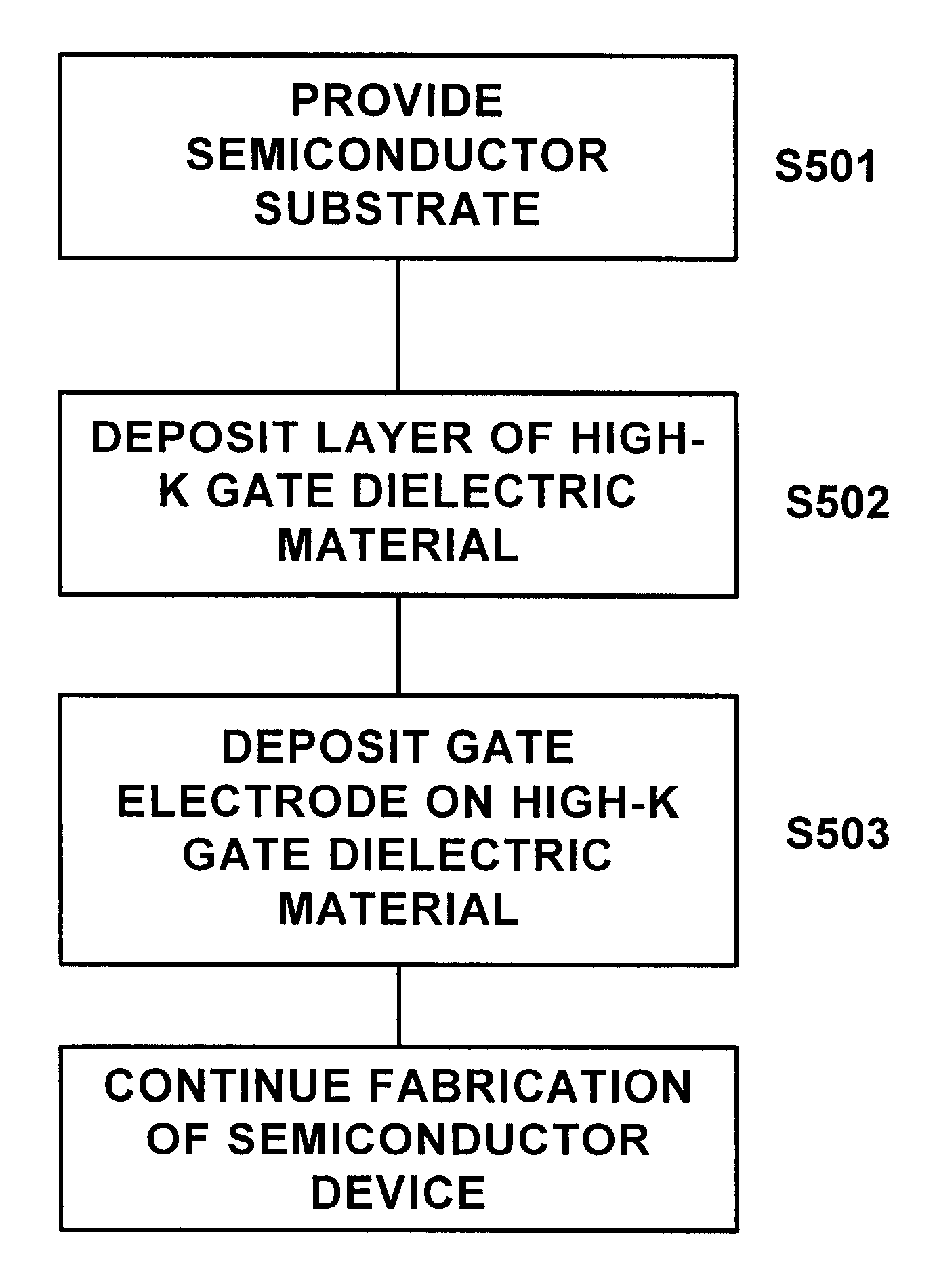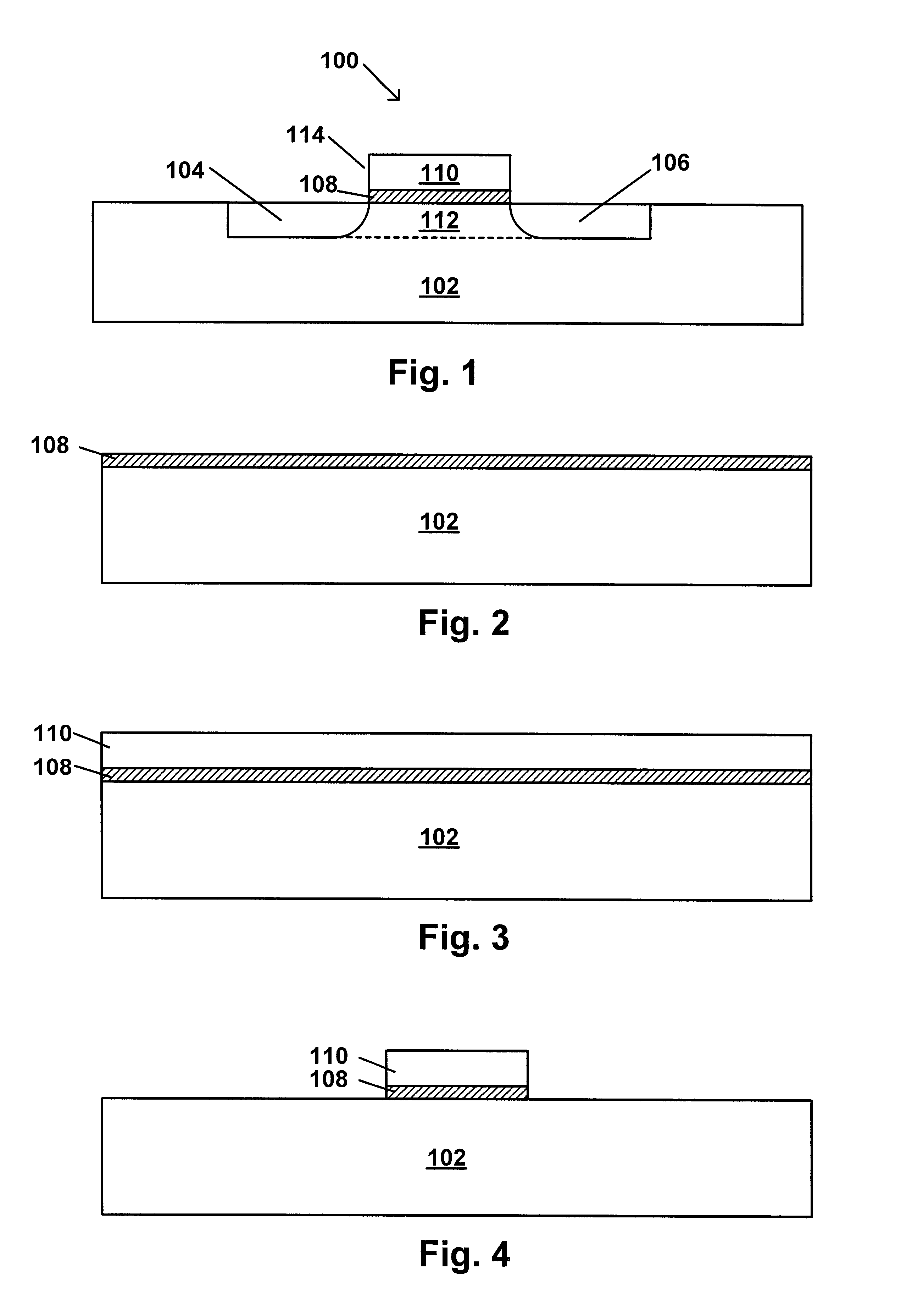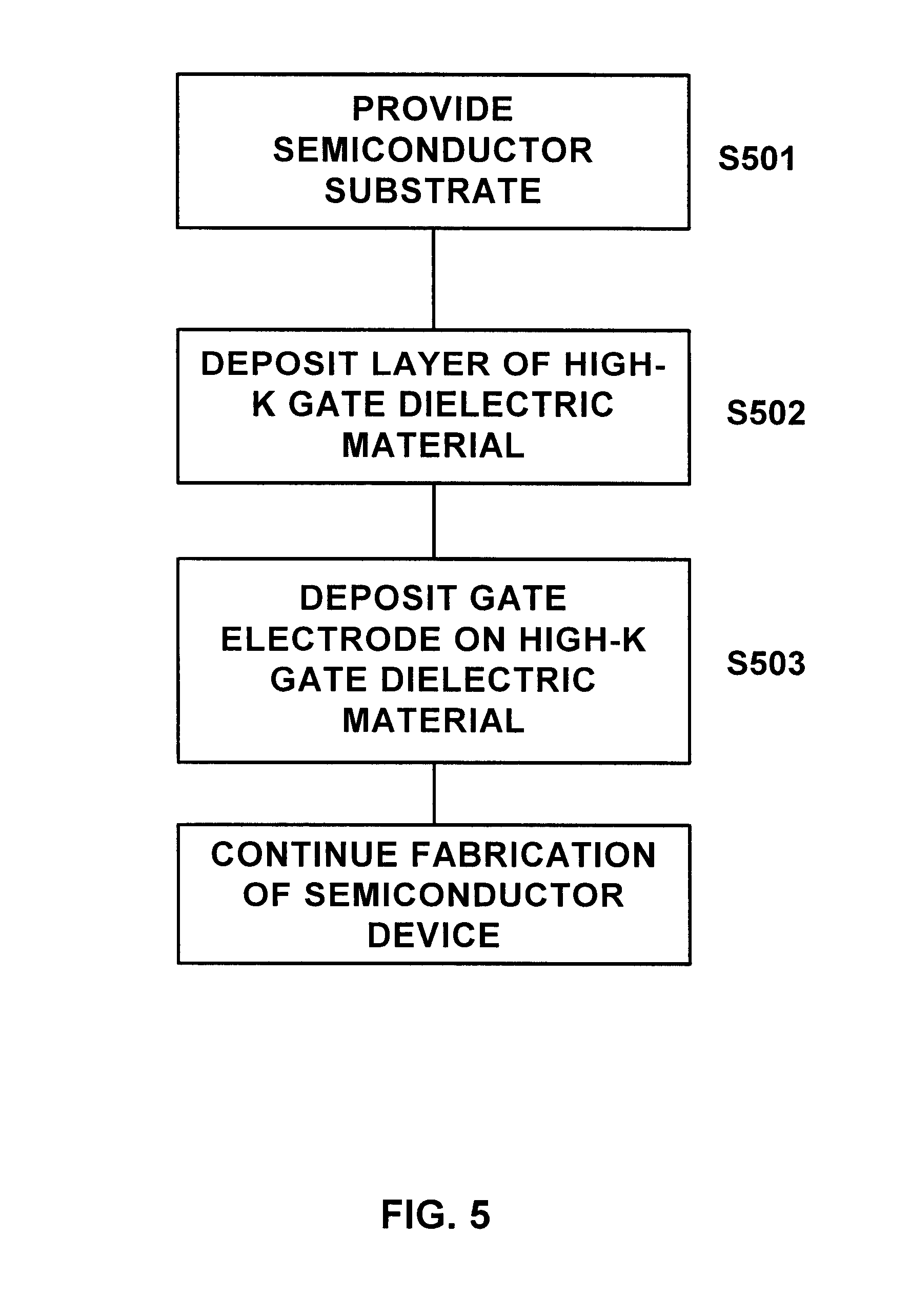Non-reducing process for deposition of polysilicon gate electrode over high-K gate dielectric material
a polysilicon gate electrode and dielectric material technology, applied in the direction of coatings, semiconductor devices, chemical vapor deposition coatings, etc., can solve the problems of new methods of fabrication or new arrangements, charge carriers to tunnel across the gate oxide layer, transistor "leaky", etc., to avoid the reduction of metal oxide
- Summary
- Abstract
- Description
- Claims
- Application Information
AI Technical Summary
Benefits of technology
Problems solved by technology
Method used
Image
Examples
Embodiment Construction
As used herein, the term "standard-K dielectric material" refers to a dielectric material having a K up to about 10. Such standard-K dielectric materials include, for example, silicon dioxide, which has a K of about 4, silicon oxynitride, which has a K of about 4-8 depending on the relative content of oxygen and nitrogen, and silicon nitride, which has a K of about 6-9, and aluminum oxide, which has a K of about 10.
As used herein, the term "high-K dielectric material" refers to a dielectric material having a K greater than about 10. Such high-K dielectric materials include, for example, HfO.sub.2, ZrO.sub.2 and others known in the art, some of which are specifically identified more fully below. In general, the term "high-K dielectric material" encompasses binary, ternary and higher oxides and any ferroelectric material having a K of about 10 or more. High-K dielectric materials may also include, for example, composite materials such as hafnium silicate, which has a K of about 14, an...
PUM
 Login to View More
Login to View More Abstract
Description
Claims
Application Information
 Login to View More
Login to View More - R&D
- Intellectual Property
- Life Sciences
- Materials
- Tech Scout
- Unparalleled Data Quality
- Higher Quality Content
- 60% Fewer Hallucinations
Browse by: Latest US Patents, China's latest patents, Technical Efficacy Thesaurus, Application Domain, Technology Topic, Popular Technical Reports.
© 2025 PatSnap. All rights reserved.Legal|Privacy policy|Modern Slavery Act Transparency Statement|Sitemap|About US| Contact US: help@patsnap.com



